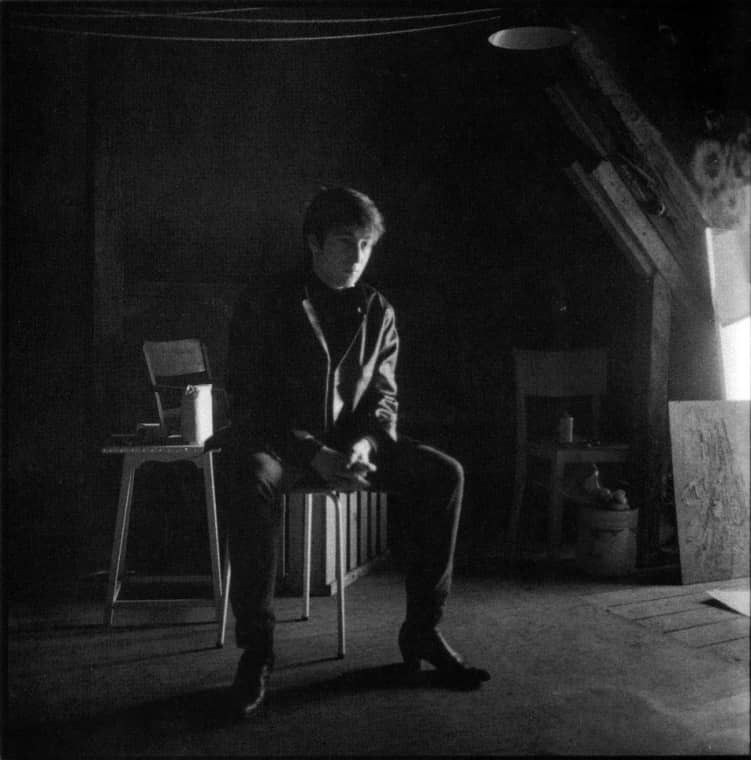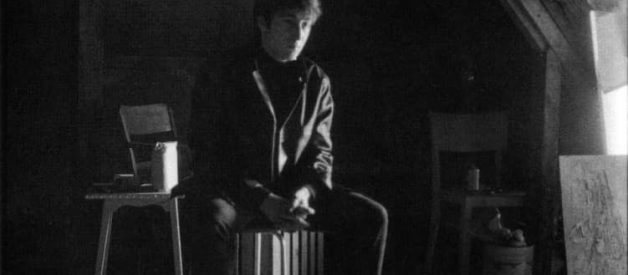
On 29th August 1966, over 25,000 screaming Beatlemaniac?s crowded around Candlestick Park in San Francisco, California to witness the final Beatle concert that ever took place in front of a paying audience. The set-list for that show was identical to the one the band used for all the shows of that tour, which started with the Chuck Berry cover ?Rock N Roll Music? sung by John Lennon and ended with Paul McCartney signing the crowd-classic Long Tall Sally. Amongst all the songs featured in that set-list lies one particular song, which can be considered as one of the greatest John Lennon compositions of all time.
Genesis
To those in attendance The Beatles could do no harm, but the band didn?t see themselves that way. By the time the concert ended The Beatles had matured considerably and were no longer behaving as the group that was loved & adored by the masses. Instead, they were developing to reflect their true character that was soon becoming evident in the songs they produced in their albums. Gone were the days when they wrote songs like ?A Hard Day?s Night? to please the masses and instead wrote songs that reflected their true personality as individuals. Paul McCartney, showcased his vast musical knowledge by swapping the charming pop songs like ?Can?t Buy Me Love? for the guitar-heavy ?Paperback Writer?, which could easily be the innovator of genres like Hard Rock. George Harrison channeled the growing influence of Ravi Shankar by writing songs like ?Think For Yourself? and John Lennon innovated further by letting his talent as a songwriter run wild where he had the potential to bring the audience into his world by writing in first-person. Amongst many examples the cult-classic?s include ?Help!? and ?Nowhere Man?.
And this is something that only future generations can appreciate as The Beatles were at the forefront of a revolution that single handedly shaped the music industry for years to come. They were a pioneer of something no one understood at the time. For example did you know, when they released ?Revolver? each song on the album played an important part in innovating future genres? For Example ?Taxman? could be seen as a fore-runner to Punk Rock & ?Tomorrow Never Knows? inspired Electronic music etc.
Introduction
For those who aren?t aware Nowhere Man is the fourth track of The Beatles sixth studio album, Rubber Soul, which is infamous for showcasing the bands new direction in music where they were less interested in playing music live, and were rather interested in using the recording studio as an instrument, which totally changed the public?s understanding of what a recording artist stands for. Amongst the songs featured on this record, lies a John Lennon composition titled ?Nowhere Man?, which is perfect example of what a John Lennon song typically represents, which is the precise yet immaculate ability of his to draw the listener into his world by writing songs in first person.
The inception of this song came at a time when The Beatles were in the middle of coming up with songs to record for Rubber Soul. One such instance took place where John Lennon was desperately trying to come up with a new song for the record and was highly uninspired at the time to come up with something worthwhile for the band to record. Instead he gave up after trying for 5 hours, and went to lie down when suddenly the entire song just came to him in a flash and that became the basis of the song. He later claimed that songwriting is all about letting go and that?s what the game is about (1). In his famous playboy interview he later claimed that writing music was like being possessed, like a psychic or a medium. It has to go down or else it won?t let you sleep, so you have to get up make something of it and then you?re allowed to go to sleep (2). His Lennon-McCarteny peer Paul-McCartney himself recognised ?Nowhere Man? as one of his best songs (3).
This song in particular features a style of vocals by Lennon, which is both intimate and universal and in a way can be considered as the voice of the voiceless. Let?s face who hasn?t felt like a ?Nowhere Man? at some point in their life where they doubt their entire existence and do what they do best in an effort to keep their confidence up? This is the true talent of John Lennon as he successfully made a career out of bringing people into his vision of the world. He soon followed this up with Strawberry Fields Forever, which showed up as a single to the predecessor of Sgt. Pepper?s Lonely Hearts Club Band two years later.
The last we saw of the song while The Beatles were together was in the 1968 animated film Yellow Submarine. It appears in the scene where Jeremy Hillary Boob, a strange gopher-like man from the Sea of Nothing is the ?Nowhere Man?. Ringo takes pity on him and invites him into the Yellow Submarine.
Recording & Production
On October 21 1965, The Beatles came together in Studio Two of Abbey Road to record a rhythm track for ?Nowhere Man?. Although the recording session was unsuccessful they came to Abbey Road the next day and recorded another five takes, where Take 5 was deemed acceptable by their producer George Martin. The notable instruments featured here were a Jumbo J-160 E acoustic guitar, which was used by Lennon on a number of occasions in the past. However, for the electric guitar portion of the song both him and George Harrison switched to a Fender Stratocaster Sonic Blues in a guitar track that was reserved by them. George Harrison was the source of this revelation in his interview where he revealed that the Fender Stratocaster Sonic Blues was used a lot on Rubber Soul most notably this song (4).
It was John Lennon who requested Mark Lewisohn to make the guitars in the song as high-pitched as possible, and although the engineers were reluctant he later agreed. Paul McCartney later commented that it?s the most treble-y bunch of guitars he had ever heard on record (5).
Musical Structure
The song is introduces with the E Chord on ?He?s a real? and then moves towards a 5?4?3?2?1 pitch descent between the B (V dominant) chord on ?nowhere man? and A (IV subdominant) chord on ?sitting in?. A twist further arrives on the Aminor chord replaces the A in the final line (?nowhere plans?) and the simultaneous G? note melody creates a dissonant Am (6). The refrain, which appears thrice, fumbles between a G? minor/A major (iii?IV) sequence before arriving back on an F? minor and leading back to the verse on a B7. The final note of the guitar solo uses a string-harmonic to create a high-pitched bell sounding note.
Lyrics & Legacy
As mentioned earlier that this era in the band?s illustrious history reflected their maturity, which later evolved their music. ?Nowhere Man? represents that change for John Lennon as it?s of his first Beatle compositions to be completely unrelated to romance or love, and marks the introduction to his Lennon?s philosophically oriented songwriting. This marks a drastic change in pop songwriting, which originated in the 1950?s & early 60?s where the basis for any song was the relationship between a boy and girl. This in-turn influenced Lennon & McCartney?s songwriting, whether it was the vague cliches (?Love Me Do?), he romantic complication of (?If I Fell?), or the jealousy on (?You Can?t Do That?). Although ?Help? marked the first time John Lennon was writing about himself it still included the line ?appreciate her being round.?
?Nowhere Man? was the first to break out of this mold and introduced Lennon as a doubtful-yet confident songwriter who can bring you into his world, while simultaneously making you change your perspective on life. He accomplished this with lyrics like ?Doesn?t have a point of view, Knows not where he?s going to, Isn?t he a bit like you and me??. This opened the floodgates for his fellow Beatles and a host of other musicians and songwriters to come up songs that reflected the changing times. This single-handedly change the face of the music industry and paved the way for the experimental music that followed in the 1970?s.
References
(1) Hunter Davis, The Beatles, updated ed. (New York; W.W. Norton, 2010).
(2) Seff, The Playboy interview with John Lennon and Yoko Ono.
(3) Paul McCartney, Many Years From Now.
(4) Babiuk, Beatles Gear.
(5) Lewisohn, The Complete Beatles Recording Sessions.
(6) Dominic Pedler. The Songwriting Secrets of the Beatles. Music Sales Limited. Omnibus Press. NY. 2003. p 193


